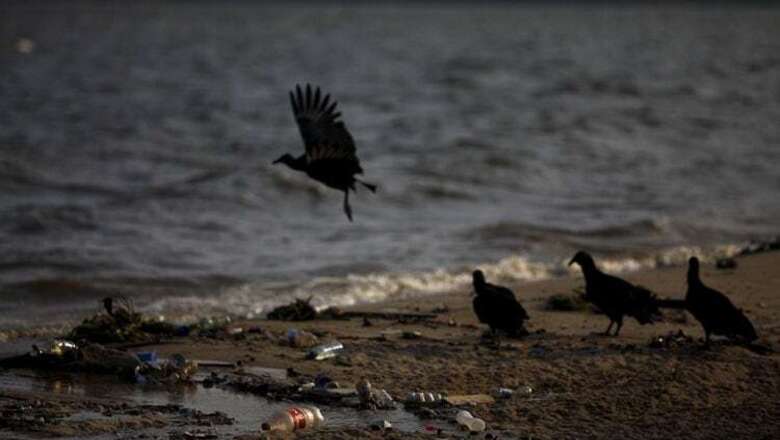
views
Dharamsala:The Pong Dam Wildlife Sanctuary in Himachal Pradesh saw a comeback of endangered white-rumped
vultures with reported sighting of around 175 birds, the state Forest and Wildlife department on Friday said.
"Vulture conservation and rehabilitation programme, which was started in 2004-05 by closely monitoring 26 nests and 23 fledglings, has shown amazing results," Additional Chief Secretary (Forest and Wildlife) Tarun Shridhar said.
In 2013-14, the number of nests counted were 274 while the number of fledglings stood at 241. The number must have gone up by now, he said adding, "it was D S Dhadwal, a range officer at Pong Dam lake who along with his team started a documentation drive."
White-rumped vultures were once declared 'critically endangered species' after their population declined by 95 per cent.
The birds were reproducing in 35 breeding colonies on the old Cheer trees growing on the slopes of Shivalik Hills, Range
Officer Dhadwal said, adding the only fear was the breeding sites are under threat of timber exploitation and resin
tapping.
The Pong Dam reservoir in Kangra district a popular wildlife sanctuary is one of the 25 international wetland sites in India and a favourite spot for migrating birds from Siberia and Central Asia.
According to a day-long summer avian count done in the last week of June by the wildlife wing of Himachal Pradesh Forest Department, 12,314 migratory birds are roosting and nesting in Pong Wetland.
There were 423 bird species, 18 snake species, 90 butterflies species, 24 mammals and 27 fish species at the sanctuary, the forest and wildlife department stated in its report.
"The annual summer avian count was held on June 23 to monitor the number of birds roosting in Pong Dam Wetland," Shridhar said.
"The dominant species observed were Cattle Egret (3,348), Little Cormorant (2,003), Small Pratincole (1,377), Little Egret (1,305), Red Wattled Lapwing (1,024)," he said, adding other important species found were Little Tern (194), Purple Heron (173), Yellow Wattled Lapwing (55), Gull billed Tern (46) and the Great Thick knee (43).
"Most of these birds were resident whereas the others like Yellow Wattled Lapwing, Small Pratincole, Lesser Whistling Duck, Indian Skimmer, Black crowned Night Heron and Blue tailed Bee eater are the summer migrants," the additional Chief Secretary (Forest and Wildlife) said.

















Comments
0 comment